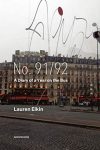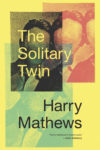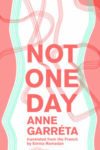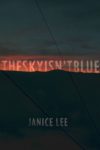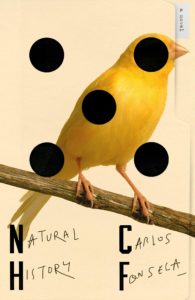
[Farrar, Straus, and Giroux; 2020]
Tr. from the Spanish by Megan McDowell
Carlos Fonseca’s moving second novel, Natural History, begins with the nighttime arrival of a package containing three manila envelopes, alongside the obituary relating the death of a celebrated fashion designer: “Giovanna Luxembourg, Designer, Dead at 40.” Within them the novel’s protagonist, a curator in a natural history museum, encounters the archive of his collaboration with Giovanna, alongside whom he had previously worked in the elaboration of a foiled exhibition. The envelopes contain photographs, essays, poems, and a series of newspaper articles that interrupt the curator’s peaceful night and jumpstart the narrative by forcing him to remember how seven years before an early phone call had turned his world upside down.
Beyond the clear influences that have marked Fonseca’s work since Colonel Lágrimas — amongst which we could count the works of Italo Calvino, W.G. Sebald, Georges Perec or Siri Hustvedt — in this second novel the author adds to this already powerful mix echoes of Roberto Bolaño by suggesting an alternative approach to the detective novel. The protagonist is given the task of solving the enigma that hides behind Giovanna Luxembourg and the story of her family. And if I speak of an alternative take on traditional detective fiction, it is because the focus here is placed not so much on the enigma’s solution, but rather in the conceptual process that marks its investigation, as if Marcel Duchamp had met Poe’s Auguste Dupin. In the tradition of what Ricardo Piglia has called conceptual literature, we are presented here with an intellectual puzzle that reminds us that it is also possible to be passionate about ideas.
Fonseca has often mentioned in interviews his fondness for Don DeLillo’s quote — “Literature is a concentrated form of thinking” — and his second novel remains faithful to that idea. After the protagonist is called in by the fashion designer to help in an exhibition that aims to find inspiration in the animal kingdom, the novel quickly becomes a profound meditation on the blurry line separating humanity from animality. Unearthing fascinating references to the history of camouflage, it finds in the chameleonic dissemblance of animals and in the phenomenon of animal mimesis a resounding metaphor through which to think about questions regarding identity. What becomes of identity once imitation, camouflage and artifice become possible? As Giovanna herself states in an interview that is included in the novel:
And then I remembered a lush jungle, and in it the figure of an insect disguising itself in the branches. I remembered that playful animal, dressing and crossdressing in the middle of the rainforest, and somehow I understood that the only escape from the fear I felt was there: in the tricks of that little creature. . .
Natural History explores the many consequences of this simple act of mimetic hide and seek where identity is shaken by the possibility of dissimulation. The possibility of becoming other guides the trajectories of the novel’s protagonists, each of whom will attempt to find himself by first learning to lose himself.
The novel then becomes a voyage of discovery that in turn leads us readers to many other voyages, opening roads that lead from New York to the Caribbean tropics, and from Israel to the Central American jungle. Guided by its obsessive characters and their fixations, the book elegantly takes the reader for a tour of Latin America’s labyrinthine contemporary history. In its pages we find characters that attempt to vanish without a trace, collectors of islands, collectors of obituaries, collectors of art and fashion, painters, photographers, activists, policemen and guerrilla fighters. All of that, and more, encapsulated within five parts that could well have worked as five short independent novels, were it not for the detective plot that skillfully weaves them together from beginning to end.
Reminiscent in this sense of Roberto Bolaño’s 2666, Natural History provides us with an innovative take on narrative unity. In interviews, Fonseca has often mentioned that, guided by the idea of camouflage, he attempted to write each of the five parts in a different narrative voice and style, adopting the voices of the writers he admired: “I was interested in finding my voice in the voice of others.” The result of this act of narrative ventriloquism is brilliant and the polyphonic structure keeps the reader engaged. In the course of the novel, we get to hear each of the family members tell his version of the story. The narrative’s kaleidoscopic variety ties in neatly with the novel’s conceptual premises regarding mimicry. It also forces the reader to wonder: what defines an author if narrative unity can no longer be found at the level of style? Instead, reminiscent of the mosaics or constellations of Walter Benjamin, the novel is interlaced by a subtle detective plot that takes as its basis the enigmatic repetition of a figure which the author borrows from Sir Thomas Browne: the five-pointed geometric pattern called the quincunx, which Browne thought represented the point of connection between nature and culture. Nature and culture, Fonseca suggests, are not different and distant realms, as we tend to think, but rather two sides of that same coin we could perhaps call life.
Trickling its way through the narrative, the figure of the quincunx becomes the guiding thread that ends up tying the five parts of the novel within a broader quest to piece together the story of Giovanna’s family, leading all the way to an enigmatic journey the family made through the Central American jungle in the 1970s. A journey of discovery that is also a game of masks. “That was ultimately what my beard had been: at first a way to hide my youth, then a way to hide behind the anonymity of the ordinary, until it became the mask that hid a premature old age,” the nameless narrator states, as if attempting to become invisible, always telling us his story from the shadows, completely alone as he becomes the solitary witness to Giovanna Luxembourg’s obsessions. She is a chameleonic personality reminiscent of both David Bowie and Andy Warhol, a camouflaged mystery which he will try to unmask.
With this game of masks as background, the poignant story of Giovanna and her parents slowly unravels as a story halfway between art and politics, dream and reality, present and past. For we must add that beyond all its cultural references to the world of philosophy and art, Natural History remains grounded in political history. Early on we hear of the designer’s fascination with the iconic Mexican revolutionary leader Subcomandante Marcos, famous for hiding his identity behind his now iconic sky mask. This final piece of the puzzle gives the reader the tools necessary to understand that beyond being a mere game, what is at stake within the pages is a profound rumination on the political history of camouflage.
For the world that Fonseca explores is one in which not only identity but also authenticity and truth seem to be at stake. A world where the distinction between true original and the fake copy is indiscernible. Having set the political grounds for the novel, Fonseca goes on to explore the role of art within this shaky landscape. Having written the novel before the debate concerning post-truth became a trending topic, he foreshadows its centrality by imagining within its pages an artist that is brought to trial for disseminating fake news throughout the media. Her reference, however, is not Trump but rather a group of Argentine artists called the Art of the Media Collective who in the 1960s began reflecting, through the use of fake news, about the role of media in the construction of public truths. Taking the allegory of camouflage to its limits, Natural History forces us to think about the unstable role of truth and art in a world where the mediated copy becomes more important than the original.
If this ends up being a novel about the media, it must be said that language is its medium. Deftly translated by Megan McDowell, the mastery, grace, and intelligence of Fonseca’s prose come forth, halfway between the baroque rhythms of Faulkner and the steady pulse of Borges. The reader is swept by the charm of the novel’s language, exhibited in powerful passages that push the reader forward like this:
The rest of the story proceeds like a dream. A years-long crossing over a continent that trickles down through serpentine lands. He rides in trucks full of chicken, trips on hallucinogenic drugs, has unexpected meeting and detours. Months that pass like a dream, without a clear path, floating on a current that guides him blindly until it deposits him, on a day he will never forget, in a jungle where, some say, the tree and the boy he has dreamed of can be found.
Natural History is, indeed, a novel whose success is predicated upon the reverberation of its images. It builds, through metaphors and the subtleness of its linguistic virtuosity, a universe where nature and culture finally meet at the end of a long voyage. And, in that long journey to the end of the night, it ends up portraying an estranged world, one that threatens to devour us but which we slowly come to recognize as ours.
Gunter Silva is a Peruvian author, he studied Political Sciences at Santa María La Católica University and earned his Bachelor’s degree in Arts and Humanities from the Open University, London and his Master’s degree in Literature and Creative Writing from the University of Westminster. He is the author of the short story collection Crónicas de Londres [Chronicles of London] (Lima, 2012) and the novel Pasos Pesados [Heavy steps] (Fondo Editorial UCV, Lima, 2016), which was translated into Danish in 2017 under a grant from the Danish Art Foundation.
This post may contain affiliate links.




